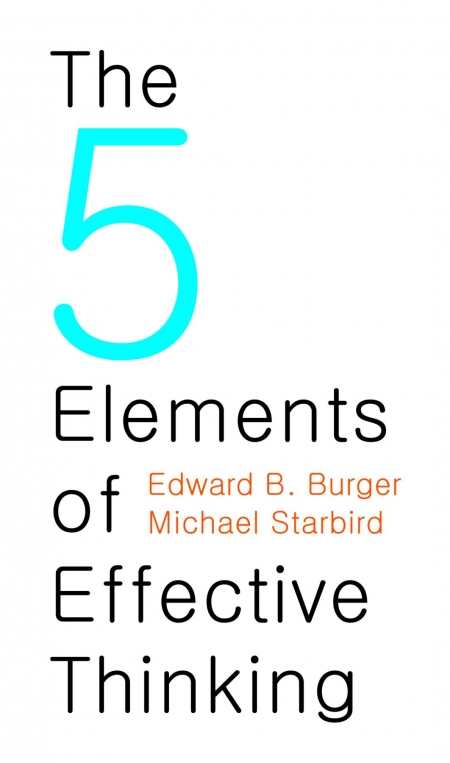The 5 Elements of Effective Thinking
What do earth, fire, air, and water have to do with effective thinking? Everything, according to mathematics professors Edward B. Burger and Michael Starbird. In The 5 Elements of Effective Thinking, the authors draw on these metaphor-laden elements from the natural world to demonstrate how to ask better questions, take calculated risks, learn from mistakes, and, ultimately, transform ourselves into more engaged and thoughtful citizens of the world.
Chapter by chapter, Burger and Starbird introduce the five elements and demonstrate how to harness them to become more probing, analytical thinkers. Earth represents understanding deeply, which begins with a solid grasp of the basics. Those struggling to make sense of materials or concepts should break them down into their elementary parts, master the simpler concepts, and then drill down to greater depths of understanding.
Fire stands for failure. Be willing to make mistakes, and to learn from those failures. One of the most valuable insights in this book is the advice to use incorrect or exaggerated answers as a sort of back door to the right answer. If you’re stuck on a problem, instead of tackling it head on, start with an answer that you know is wrong and try to figure out why. Coming at the question from this perspective enables readers to see the problem in new ways—ways that just might lead to the right answer.
Air symbolizes the act of raising questions. Before tackling a topic—whether by attending a seminar or reading a chapter—compile a list of questions you think it will answer. Such an approach keeps us more engaged in the material while also allowing us to sink deeper into it. Water, the final metaphor from the natural world, represents the flow of ideas: Extend ideas and improve on them to further your understanding.
The fifth element of effective thinking, what Starbird and Burger call the quintessential element, is on a different level from the others. It involves using the other elements to embrace change and become a more creative and engaged citizen of the world.
None of the concepts the authors introduce are groundbreaking, but their organizational scaffolding may serve to make the ideas easier for readers to retain and apply. Burger and Starbird are at their best when they draw on examples from their own classrooms. The authors’ forays into other realms, including business and day-to-day life, are less engaging and sometimes fall flat.
The 5 Elements of Effective Thinking is a useful guide for anyone interested in tackling difficult subject matter, particularly in the classroom. The book also could serve as a solid supplementary text in courses on critical thinking.
Reviewed by
Jennifer Moore
Disclosure: This article is not an endorsement, but a review. The publisher of this book provided free copies of the book to have their book reviewed by a professional reviewer. No fee was paid by the publisher for this review. Foreword Reviews only recommends books that we love. Foreword Magazine, Inc. is disclosing this in accordance with the Federal Trade Commission’s 16 CFR, Part 255.

